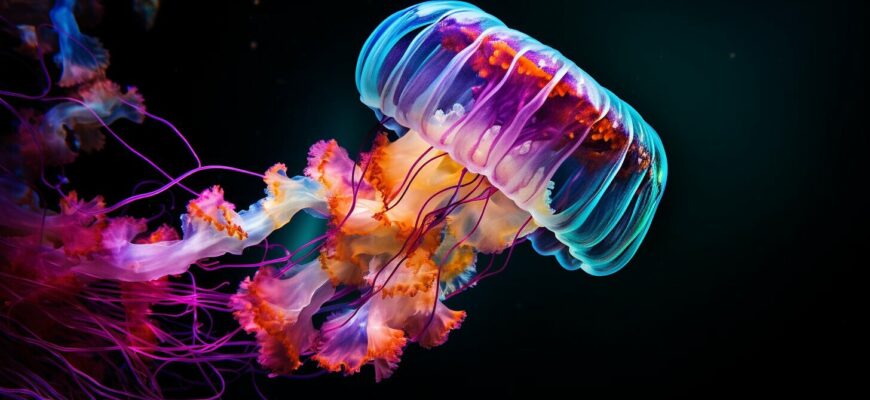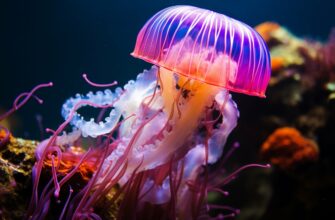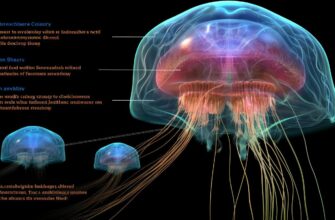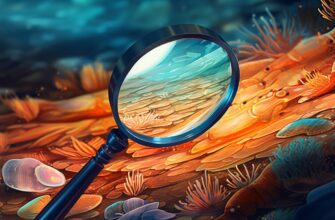Jellyfish – these fascinating creatures of the ocean – have always captured our imagination. But have you ever wondered if they have eyes like we do? In this article, we will explore the sensory abilities of jellyfish and answer the age-old question: do jellyfish have eyes?
Despite their simple appearance, jellyfish have a complex anatomy and unique sensory abilities that allow them to navigate their environment. Let’s dive in and take a closer look at how these creatures perceive the world around them.
- The Anatomy of a Jellyfish
- The Importance of Sensory Organs
- Sensory Perception in Jellyfish
- Visual Abilities
- Other Sensory Abilities
- Conclusion
- How Do Jellyfish Navigate Without Eyes?
- Frequently Asked Questions About Jellyfish Eyes
- Can jellyfish see?
- How do jellyfish “see” without eyes?
- Can jellyfish distinguish colors?
- How do jellyfish hunt without eyesight?
- Are there any jellyfish that have more advanced visual abilities?
- Can jellyfish swim in the dark?
The Anatomy of a Jellyfish
Jellyfish are fascinating sea creatures with a unique anatomy that allows them to thrive in their aquatic environment. Their bodies consist of a simple bell-shaped structure, commonly referred to as the medusa, that allows them to propel themselves through the water. At the bottom of the medusa, tentacles dangle, equipped with stinging cells that help the jellyfish capture prey.
But what about their sensory organs?
| Sensory Organs | Function |
|---|---|
| Rhopalia | Jellyfish have eight rhopalia, which are sensory structures equipped with light-sensitive cells and balance receptors. These organs help jellyfish navigate and orient themselves in the water. |
| Statocysts | Located within the rhopalia, statocysts are small sacs filled with fluid and tiny hair cells that detect motion and changes in gravity. They allow jellyfish to maintain their balance and sense vibrations in the water. |
| Ocelli | Jellyfish have simple eyes called ocelli that detect light and darkness. While not capable of forming images, these eyes allow jellyfish to sense changes in light intensity and potentially avoid predators or seek out prey. |
These sensory organs are crucial to the survival of jellyfish and allow them to navigate their environment despite their lack of a traditional nervous system.
The Importance of Sensory Organs
The sensory organs of jellyfish are vital for their survival and play a crucial role in their behavior and ecological interactions. These organs allow jellyfish to sense their surroundings and adapt to changes in their environment, such as avoiding predators or seeking out food sources.
The rhopalia and statocysts allow jellyfish to maintain their balance, navigate the water, and detect vibrations, while the ocelli detect changes in light intensity and orient the jellyfish. Together, these sensory organs allow jellyfish to thrive in their aquatic environment and are essential to their survival.
Sensory Perception in Jellyfish
Jellyfish are fascinating creatures that have a unique sensory perception system. They lack a centralized brain, but they have a network of nerve cells, sensory structures, and muscle fibers that enable them to sense and respond to their environment. Their sensory perception includes touch, taste, smell, and sight.
Visual Abilities
One of the sensory perception systems in jellyfish is their visual abilities. Despite not having traditional eyes like humans, jellyfish have specialized sensory structures called rhopalia that function like tiny eyes. Each rhopalium contains a statocyst, which is a balance receptor that helps jellyfish orient themselves and detect gravity.
Each rhopalium also contains photoreceptor cells called ocelli, which can detect light and distinguish between light and dark. These photoreceptor cells can also detect movement and changes in light intensity. Jellyfish have a simple visual system that allows them to detect changes in ambient light, such as the transition from day to night.
It is important to note that jellyfish visual abilities are limited compared to other animals. They cannot see objects or colors as humans do. Nonetheless, their visual abilities are essential for navigating their surroundings.
Other Sensory Abilities
In addition to their visual abilities, jellyfish have other sensory structures that enable them to sense their environment. For example, they have sensory hairs called cilia that can detect water movements and currents. They also have specialized cells on their tentacles called cnidocytes that can detect and respond to touch and chemical cues.
Jellyfish also have chemoreceptors that help them detect prey, predators, and mates. They have a well-developed sense of smell that enables them to follow chemical trails and locate food. They can also taste their food using specialized cells in their mouth.
Conclusion
Jellyfish have a unique sensory perception system that allows them to sense and respond to their environment. Their visual abilities are not as sophisticated as those of other animals, but they are essential for navigating their surroundings. In addition to their visual abilities, jellyfish have other sensory structures that enable them to sense water movements, touch, and chemical cues. Their sensory perception system is a remarkable adaptation that has allowed them to survive and thrive in their aquatic habitats.
How Do Jellyfish Navigate Without Eyes?
While jellyfish do not have traditional eyes, they have developed unique sensory adaptations to navigate their surroundings. They rely on a variety of sensory organs located throughout their bodies, including statocysts and rhopalia, to help them perceive their environment.
Statocysts are small, fluid-filled sacs that contain tiny calcium carbonate crystals called statoliths. As jellyfish move through the water, the statoliths move, sending signals to the jellyfish’s nervous system about changes in orientation and movement.
Rhopalia, on the other hand, contain photoreceptor cells that are sensitive to light. While these cells do not form actual images, they do allow jellyfish to sense the direction and intensity of light, helping them to avoid potential threats or find prey.
Additionally, some species of jellyfish have developed a unique ability to detect electromagnetic fields in the water. This ability is believed to help them navigate the ocean currents and locate their preferred habitats.
| Adaptation | Description |
|---|---|
| Statocysts | Small, fluid-filled sacs that contain tiny calcium carbonate crystals called statoliths. They help jellyfish sense changes in orientation and movement. |
| Rhopalia | Sensory organs that contain photoreceptor cells sensitive to light. They help jellyfish sense the direction and intensity of light. |
| Electromagnetic field detection | Some species of jellyfish can detect electromagnetic fields in the water, helping them navigate ocean currents and locate preferred habitats. |
Overall, while jellyfish may not have eyes in the traditional sense, they have developed unique sensory adaptations that allow them to navigate their surroundings and survive in their aquatic habitats.
Frequently Asked Questions About Jellyfish Eyes
Curious about jellyfish eyes? Here are some common questions and answers to satisfy your curiosity.
Can jellyfish see?
Yes, jellyfish can see to some extent, although they do not have traditional eyes like humans and many other animals. Instead, they have light-sensitive cells called “ocelli” that allow them to detect light and shadows.
How do jellyfish “see” without eyes?
Jellyfish use their ocelli to sense light and dark, and can also detect the direction of light. Some species of jellyfish also have other sensory organs, such as Statocysts, which aid in balance and orientation.
Can jellyfish distinguish colors?
Most jellyfish have limited color vision, and are only able to distinguish between light and dark, as well as some shades of blue and green.
How do jellyfish hunt without eyesight?
Jellyfish use their tentacles to capture small prey, such as plankton, and some larger species can also capture small fish. They have specialized cells called “cnidocytes” on their tentacles that contain tiny barbs or hooks that can immobilize their prey.
Are there any jellyfish that have more advanced visual abilities?
Yes, some species of jellyfish have more advanced visual systems than others. For example, box jellyfish have complex eyes with lenses and retinas, and can even distinguish colors.
Can jellyfish swim in the dark?
Yes, jellyfish can swim in the dark due to their ability to sense light and shadows. However, they may have a harder time navigating in complete darkness.
We hope these answers to common questions about jellyfish eyes have been informative!









